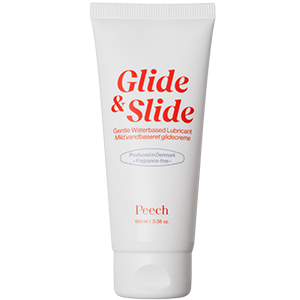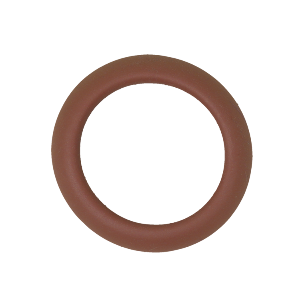The G-spot/zoneshttps://v2.langify-app.com/articles/525052#
This article is written by Jo Glud Hjerrild/@jo.hjerrild who is a doctor, sexual health counselor and queer activist - and co-founder of Normkritiske Læger (Norm critical Doctors).
The body's Bermuda Triangle
The G-spot or Gräfenberg point is named after a German gynecologist named Ernest Gräfenberg, who developed the IUD contraceptive method and in 1950 described an erogenous zone in the front wall of the vagina.
Despite the fact that the theory of the G-spot came about a long time ago, the vaginal G-spot remains something of a Bermuda Triangle of the body. There are plenty of people who can describe having experiences with the area, but researchers have not been able to prove its existence.
There are many studies where people with a vagina describe having a particularly sensitive area, which they call their G-spot. However, researchers have not been able to find one anatomical point or structure that could be the G-spot. Nor have they been able to fully explain the extra sensitivity in the area, as there are no extra nerve endings found there relative to other areas of the vagina.
However, just because it's not scientifically proven doesn't mean we shouldn't talk about it - and perhaps our previous understanding and study of the G-spot has simply been wrong.
How do you find the G-spot/zone?
The G-spot/zone is located approximately 2-5 cm inside the vagina, towards the abdomen. In other words, on the "front wall" of the vagina, if you want to be more doctor-like.
Some describe it as a smooth cushion, others feel a "thicker" more grooved area and for many, the surface will feel like the rest of the vaginal wall.
CUV, the "new" G-spot
There used to be a very compartmentalized view of erogenous zones and orgasms. For example, something was a clitoral orgasm, something was a vaginal orgasm, something was a G-spot orgasm, etc. While it is possible to orgasm from stimuli in different places, what is stimulated is probably more related to each other than we previously thought.
Some recent scientific articles talk about the clitourethrovaginal complex - a super wordy term. The theory of CUV concentrates on the fact that the clitoris, urethra and vagina are 3 sensitive structures, supplied by the same nerve (nervus pudendus) and that sexual pleasure and eventual orgasm can occur by stimulating these areas from multiple angles and at the same time.

If we look at this drawing of the entire clitoris, the entire urethra and bladder, as well as the vagina and uterus - we can see the close connection between the inner part of the clitoris, the urethra and the vagina. It all lies right next to each other and it suddenly makes sense that by stimulating 2-5cm inside the vagina towards the abdomen, you hit all the sensitive structures of the vagina, urethra and the inner part of the clitoris at once and that this can provide extra pleasure.
So, instead of looking for just one small, round point in the vagina, perhaps it's by stimulating multiple structures through the vaginal wall that provides the "G-spot pleasure".
Stimulation of the vaginal G-spot
A good way to stimulate the G-spot/area/CUV can be by making a "fish hook" with 1-2-3 fingers inside the vagina and then making "come here" movements towards the sensitive area of the vagina. There are also sex toys that are designed to stimulate the area and you can also hit it with a penis if you find the right positions or if you are lucky enough to have sex with a cock that hooks upwards.
You can see the range of G-spot sex toys here.
Squirting
Some people may experience a squirting orgasm when the G-spot is stimulated. Some describe it as an orgasm with more "pressure" than, for example, an orgasm caused by stimulation of the clitoris.
You can read more about squirting and the squirting orgasm from Normkritiske Læger in our article here.
The anal P-spot
The anal G-spot is also called the P-spot because it is centered around the prostate gland, also known as the bladder neck gland. The prostate sits just below the bladder and around the urethra in people born with a penis, and the point can be stimulated from the rectum. It can be felt as a "walnut" about 6 cm up and in towards the bladder/forward towards the abdomen. Some also say it feels like a butterfly, two soft cushions with a string in between.
The prostate produces fluid that comes out with the semen and is the semen's "lunchbox". The P-spot, like the G-spot in the vagina, is described as an extra sensitive point that can induce orgasm with the right stimuli. The P-spot is supplied by the same nerve as the vaginal G-spot/CUV, the pudendal nerve.
Anal G-spot stimuli
Anal G-spot/P-spot stimulation works in a similar way to vaginal G-spot/CUV stimulation. You can make fishhook movements with your fingers, there are perfectly angled vibrating toys and some can also feel stimuli during penetrative sex if you find the right positions.
And remember to use lube, as the anus doesn't make lubricant in the same way as the vagina.
What are Norm-Critical Doctors?
Normkritiske Læger(@normkritiskelaeger) is an association of doctors and other healthcare professionals who work against discrimination in health and who want zero tolerance for sexism, racism, homophobia, transphobia, fatphobia and ableism in healthcare.
You can also read another article from Normkritiske Læger on "The myth of virginity - from a medical perspective"





